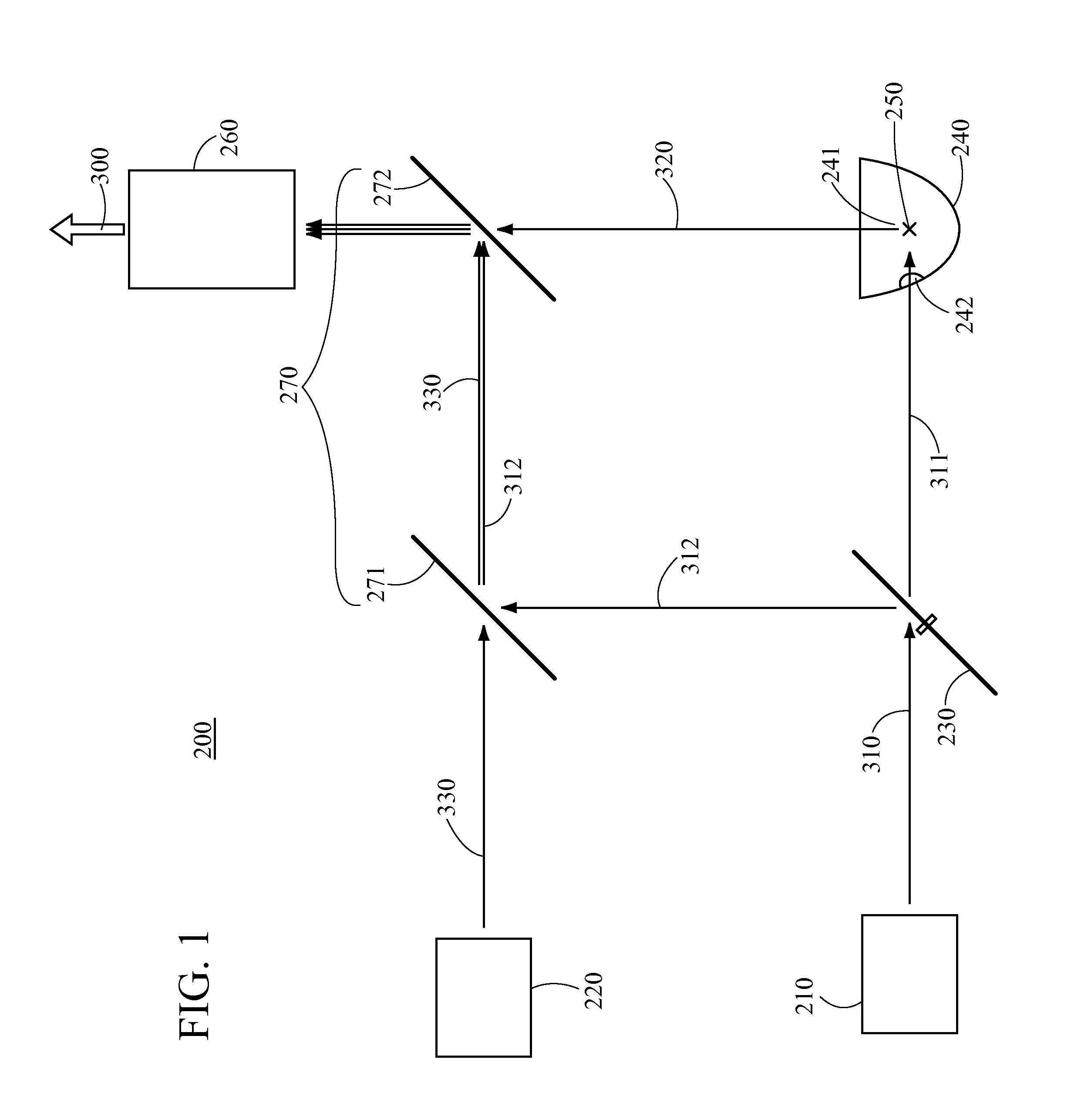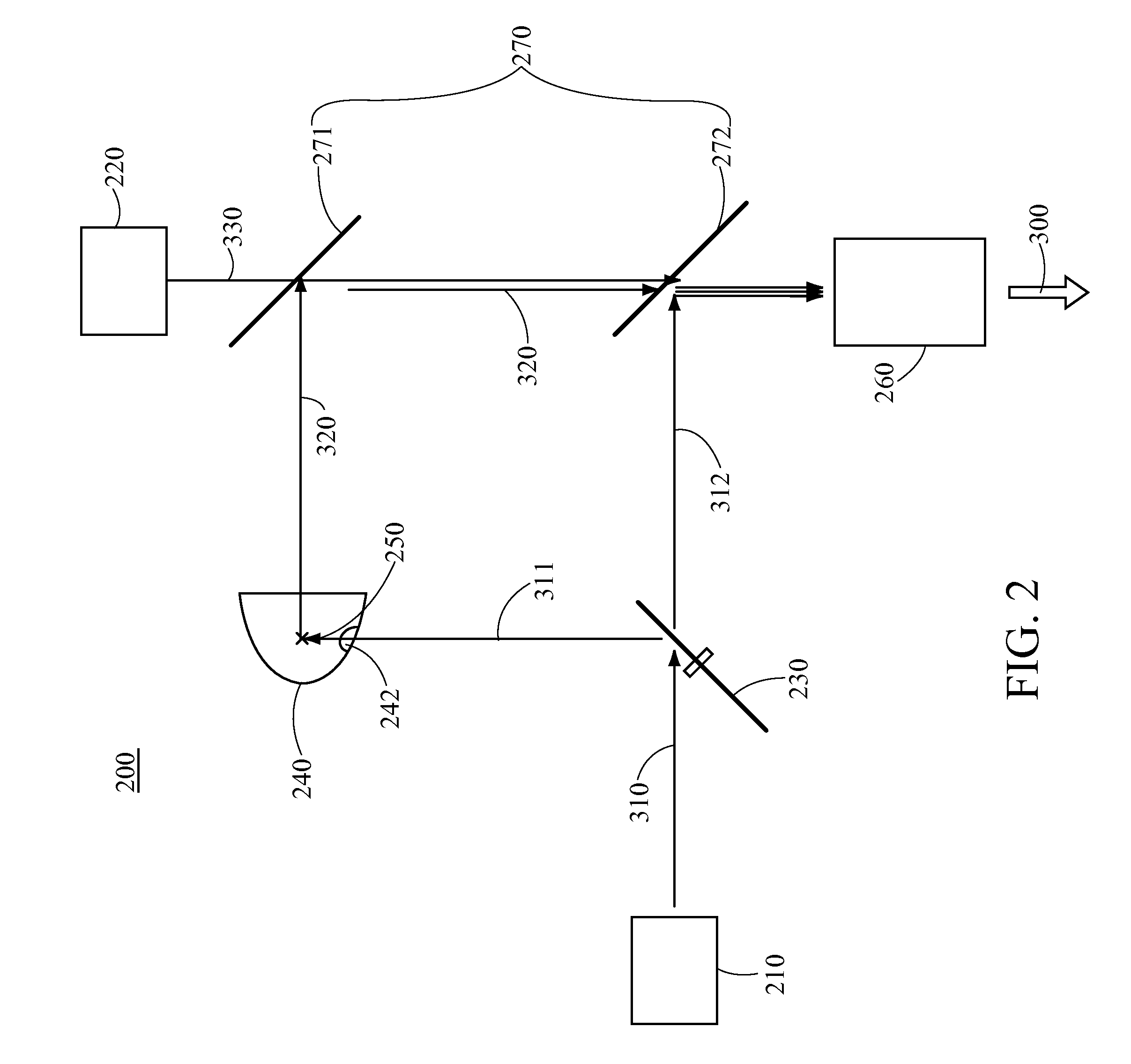Illumination system
a technology of illumination system and light source, which is applied in the direction of instruments, lighting and heating apparatus, optical elements, etc., can solve the problems of divergent light, not completely replacing the conventional high-pressure mercury lamp, and still inferior solid-state light sources to the extent of luminance they provide, so as to improve the luminance and simple construction
- Summary
- Abstract
- Description
- Claims
- Application Information
AI Technical Summary
Benefits of technology
Problems solved by technology
Method used
Image
Examples
first embodiment
[0037]an illumination system 200 for a projector according to the present invention is shown in FIG. 1. The illumination system 200 comprises a first light source 210, a second light source 220, a first timing controlling unit 230, a curved reflecting component 240, a wavelength converting component 250, a light homogenizing component 260 and at least one color separating mirror (i.e. a dichroic mirror) 270. The first light source 210 is adapted to provide a first wavelength light 310, while the second light source 220 is adapted to provide a third wavelength light 330. Meanwhile, the first timing controlling unit 230 is adapted to divide the first wavelength light 310 into a first timing portion 311 and a second timing portion 312. The wavelength converting component 250 is disposed at a focal point 241 of the curved reflecting component 240 so that when the wavelength converting component 250 receives the first timing portion 311 of the first wavelength light 310, the first timing...
second embodiment
[0048]The traveling paths of the first wavelength light 310, the second wavelength light 320 and the third wavelength light 330 in the second embodiment will be described as follows. As shown in FIG. 2, when the first wavelength light 310 is emitted by the first light source 210, the first timing portion 311 of the first wavelength light 310 is reflected by the reflecting portions 232 of the first timing controlling unit 230 and then passes through the hole 242 formed in the curved reflecting component 240 to the wavelength converting component 250 located at the focal point 241 of the curved reflecting component 240. The wavelength converting component 250 converts the first timing portion 311 of the first wavelength light 310 into the second wavelength light 320, which is then reflected and converged by the curved reflecting component 240 to the first color separating mirror 271. Then, the second wavelength light 320 is reflected by the first color separating mirror 271, and is tr...
third embodiment
[0051]In detail, the second timing controlling unit 400 comprised in the third embodiment is adapted to divide the first timing portion 311 of the received first wavelength light 310 into a third timing portion (not shown) and a fourth timing portion (not shown); the third timing portion has the same timing as the second timing portion 312. The second timing controlling unit 400 comprises a rotary disk 410 that is rotatable, and the direction of the rotation axis of the rotary disk 410 may be perpendicular to the direction of exiting light from the curved reflecting component 280.
[0052]The rotary disk 410 has at least one converting portion (or converting region) and at least one reflecting portion (or reflecting region). As shown in FIG. 5, in this embodiment, the rotary disk 410 preferably has two converting portions 411 and two reflecting portions 412 on each of the two surfaces thereof, and the two converting portions 411 are arranged alternately with the two reflecting portions...
PUM
 Login to View More
Login to View More Abstract
Description
Claims
Application Information
 Login to View More
Login to View More - R&D
- Intellectual Property
- Life Sciences
- Materials
- Tech Scout
- Unparalleled Data Quality
- Higher Quality Content
- 60% Fewer Hallucinations
Browse by: Latest US Patents, China's latest patents, Technical Efficacy Thesaurus, Application Domain, Technology Topic, Popular Technical Reports.
© 2025 PatSnap. All rights reserved.Legal|Privacy policy|Modern Slavery Act Transparency Statement|Sitemap|About US| Contact US: help@patsnap.com



